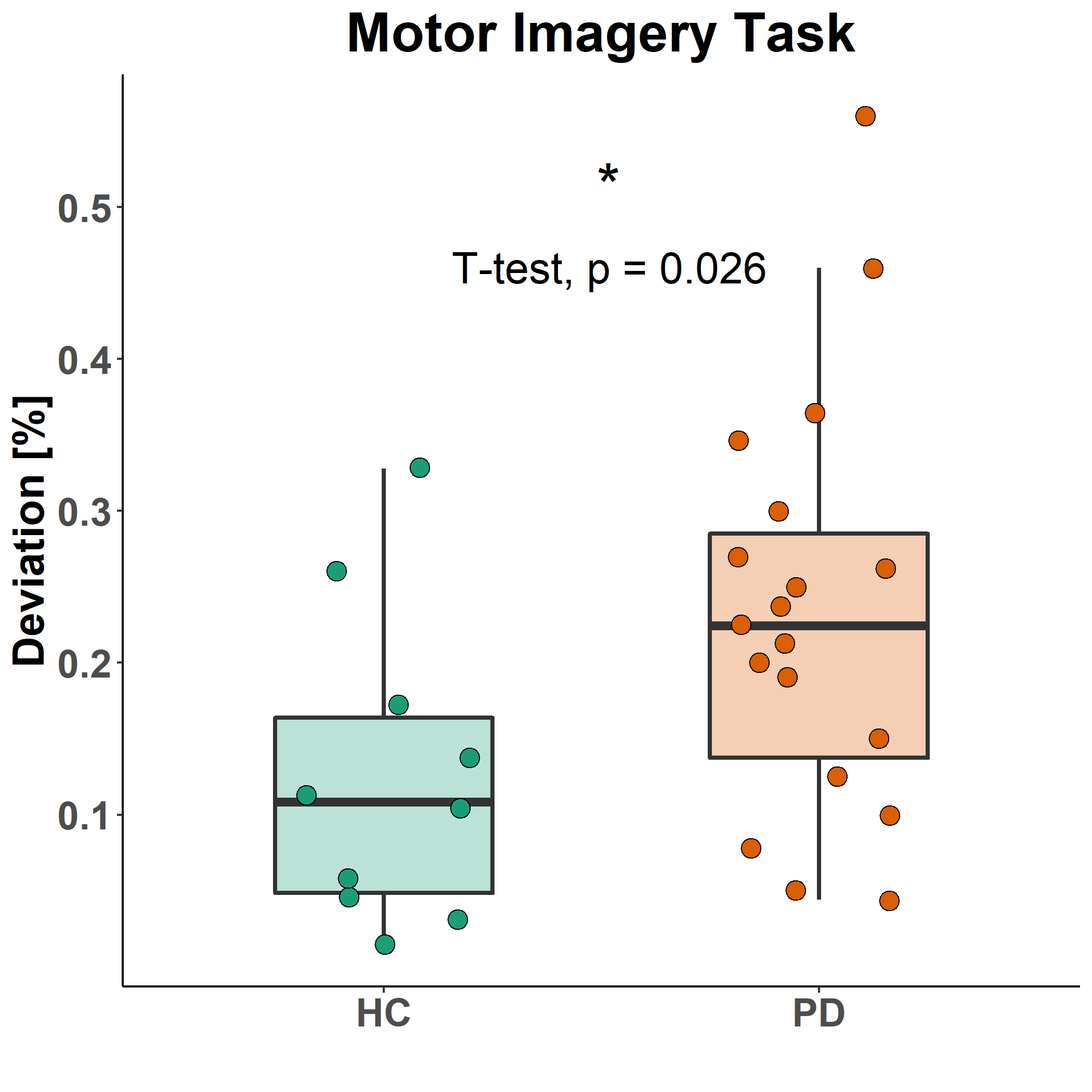Category: Parkinson's Disease: Cognitive functions
Objective: Investigating the reproduction of time intervals in context of a motor imagery task in Parkinson’s disease
Background: In Parkinson’s disease (PD), impaired perception of suprasecond time intervals with importance for anamnesis and everyday situations has been repeatedly reported [1, 2]. However, it has not yet been conclusively clarified whether these deficits occur specifically in the context of movement or go beyond that. In this study, the time perception of PD patients was investigated during motor imagery and during an auditory control task to find out whether the deficits occur specifically in the context of motor tasks.
Method: In the present study, we investigated the performance of 19 PD patients and 10 healthy controls in two different time reproduction tasks. Subjects were asked to walk down a corridor for 10 seconds. In a subsequent motor imagery task, they were asked to imagine the same walk and to reproduce the amount of time spent moving. In an auditory control task, subjects had to reproduce time intervals which were framed by a mono-frequent tone previously presented to them. The percentage deviation between presented time intervals and the reproduced time was compared between the groups for both tasks. Group-Task interactions were tested with a mixed analysis of variance.
Results: Compared to control subjects, patients significantly misjudged time intervals in the motor imagery task (t = -2.38, p = 0.026) [Figure 1] and auditory control task alike (p = 0.041, W = 50). There was no uniform under- or overestimation and motor imagery performance was unrelated to clinical parameters, except for significant correlation with the subitem pair associations of the Parkinson neuropsychometric dementia assessment. Non-parametric permutation tests of the mixed repeated measure design revealed a significant main effect for group (p = 0.007) in the absence of a significant effect for task or group-task interaction (p >.05).
Conclusion: In accordance with previous findings, our data confirm suprasecond time reproduction deficits in PD patients. Out results suggest that the observed deficits in time reproduction do not occur specifically in context of movements, but reflect a general misperception, as patients similarly misperceived the auditorily presented time interval.
References: [1] Pastor, M. A.; Artieda, J.; Jahanshahi, Marjan; Obeso, J. A. (1992): TIME ESTIMATION AND REPRODUCTION IS ABNORMAL IN PARKINSON’S DISEASE. In Brain : a journal of neurology (1), pp. 211–225.
[2] Bernardinis, Matthew; Atashzar, S. Farokh; Jog, Mandar S.; Patel, Rajni V. (2019): Differential Temporal Perception Abilities in Parkinson’s Disease Patients Based on Timing Magnitude. In Scientific reports 9 (1), p. 19638. DOI: 10.1038/s41598-019-55827-y.
To cite this abstract in AMA style:
M. Ruppert, L. Torfah, V. Hammes, A. Greuel, F. Maier, L. Timmermann, D. Pedrosa Carrasco, C. Eggers. Time reproduction in Parkinson’s disease: Is there a specific impairment in context of movements? [abstract]. Mov Disord. 2022; 37 (suppl 2). https://www.mdsabstracts.org/abstract/time-reproduction-in-parkinsons-disease-is-there-a-specific-impairment-in-context-of-movements/. Accessed April 3, 2025.« Back to 2022 International Congress
MDS Abstracts - https://www.mdsabstracts.org/abstract/time-reproduction-in-parkinsons-disease-is-there-a-specific-impairment-in-context-of-movements/

